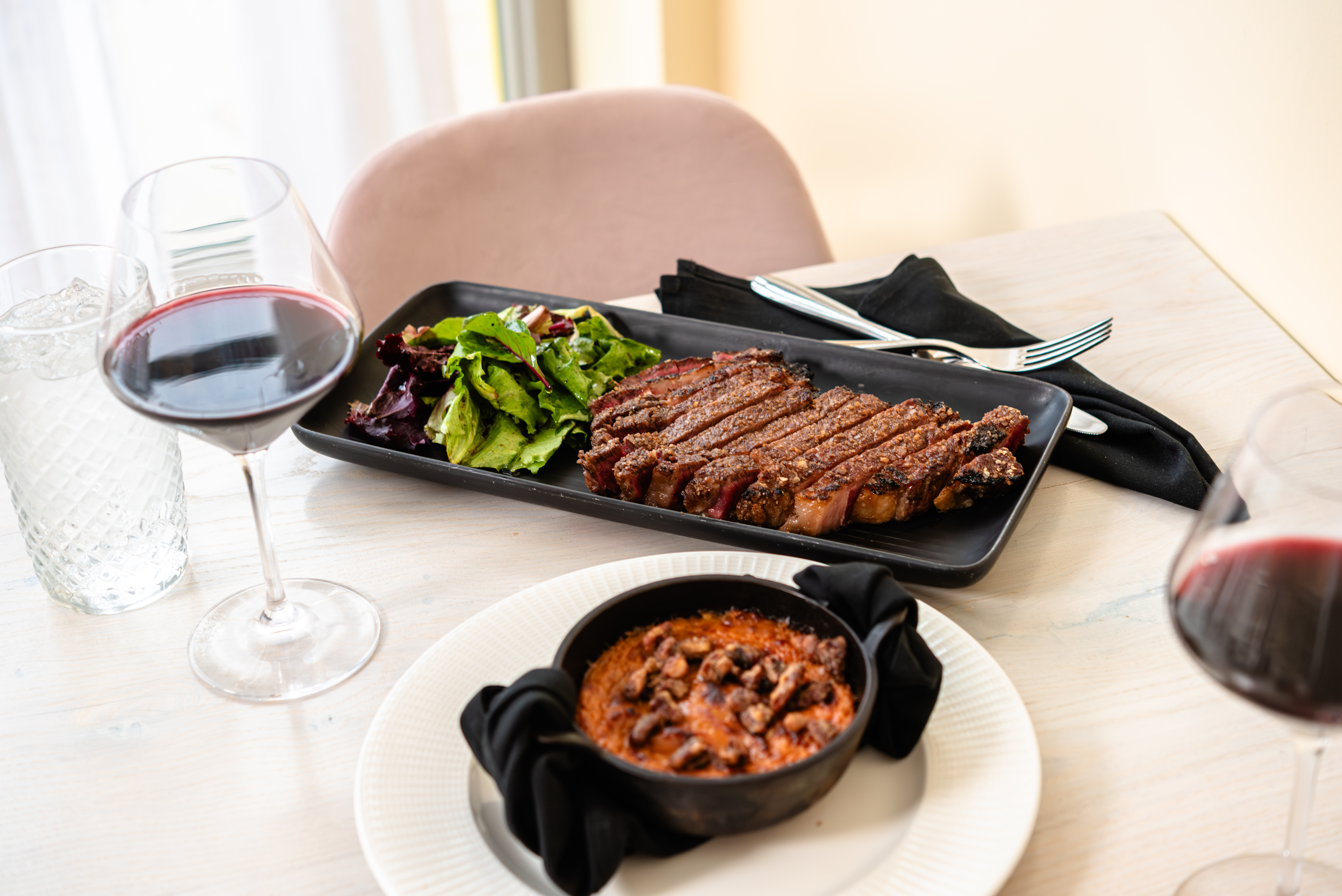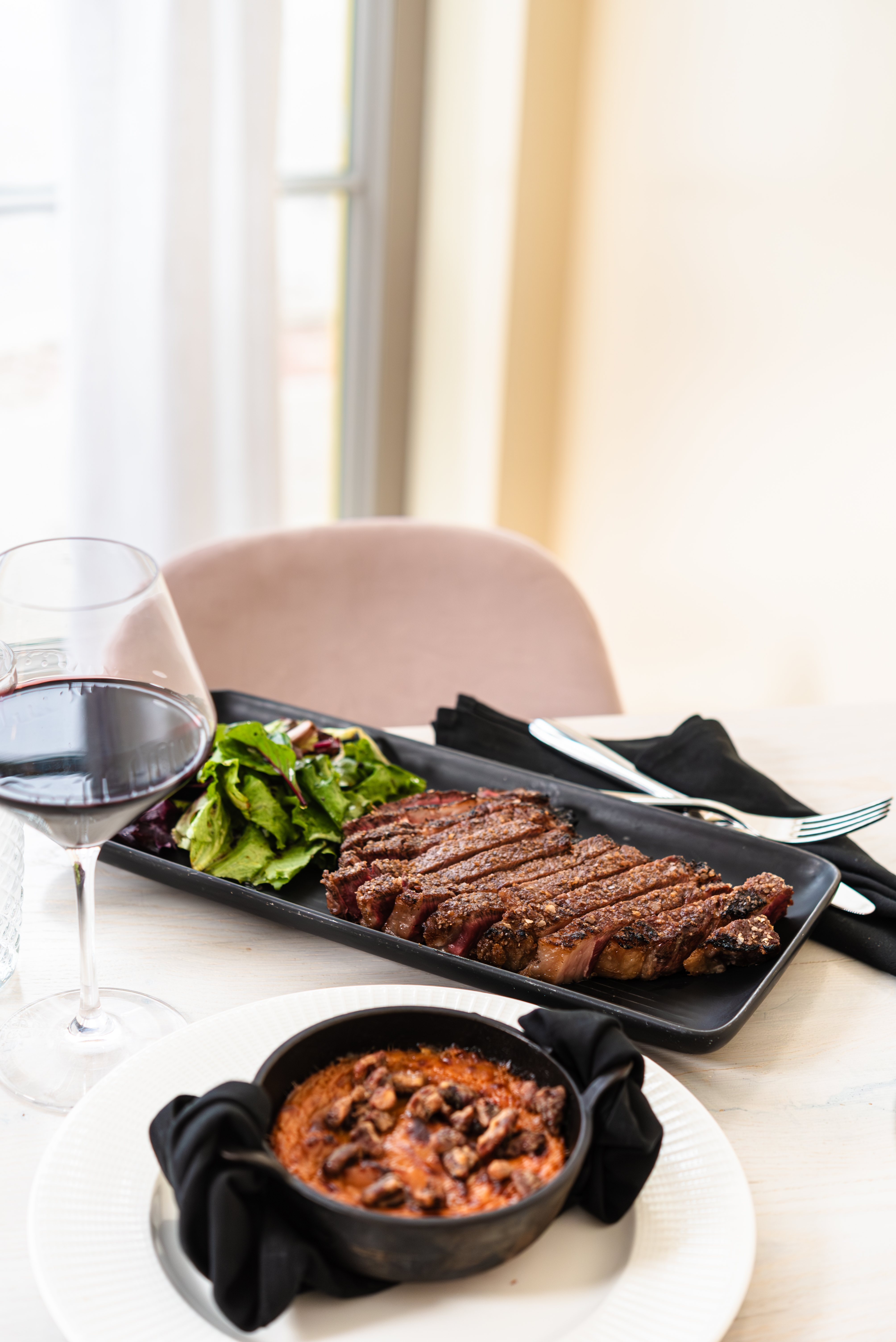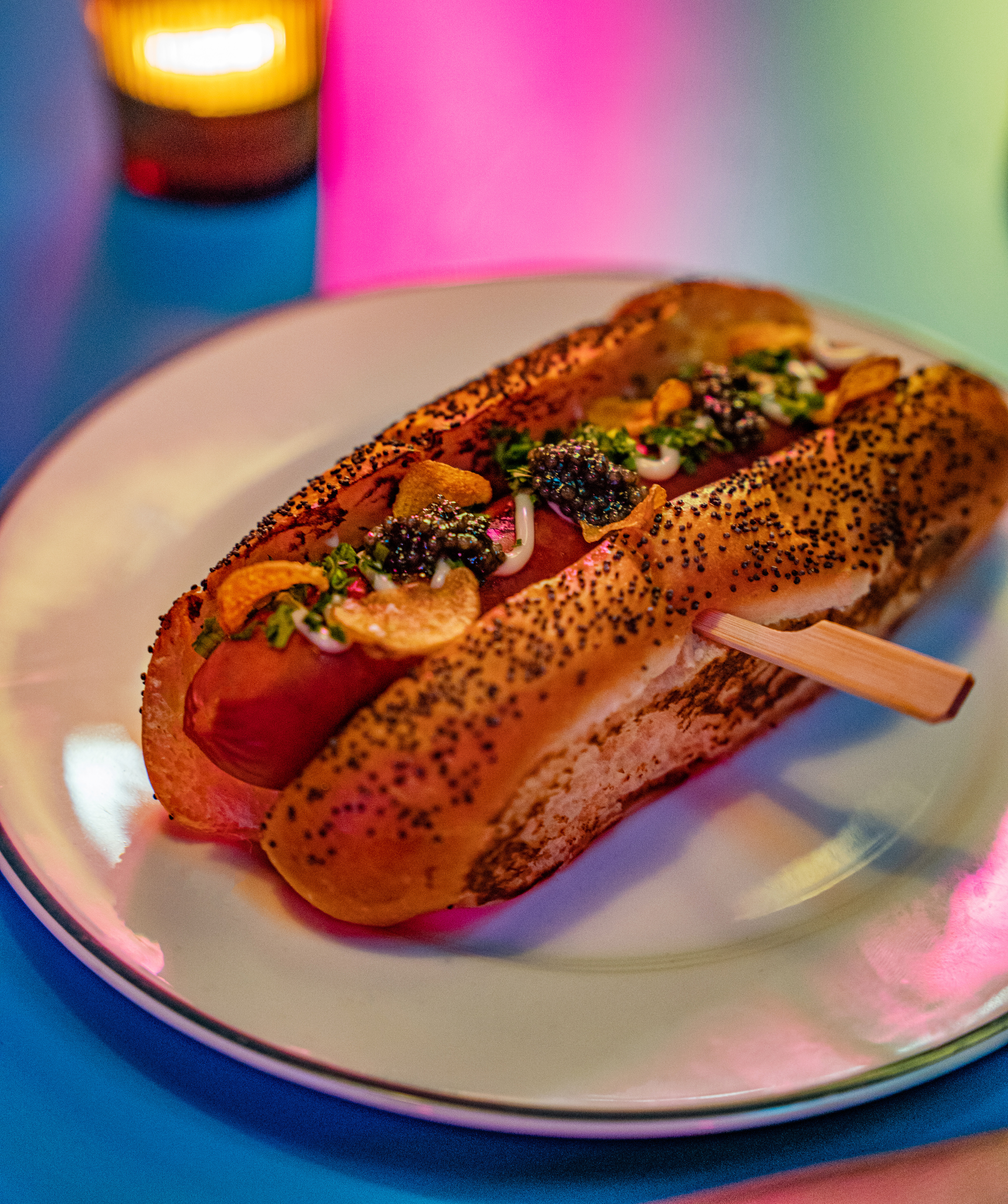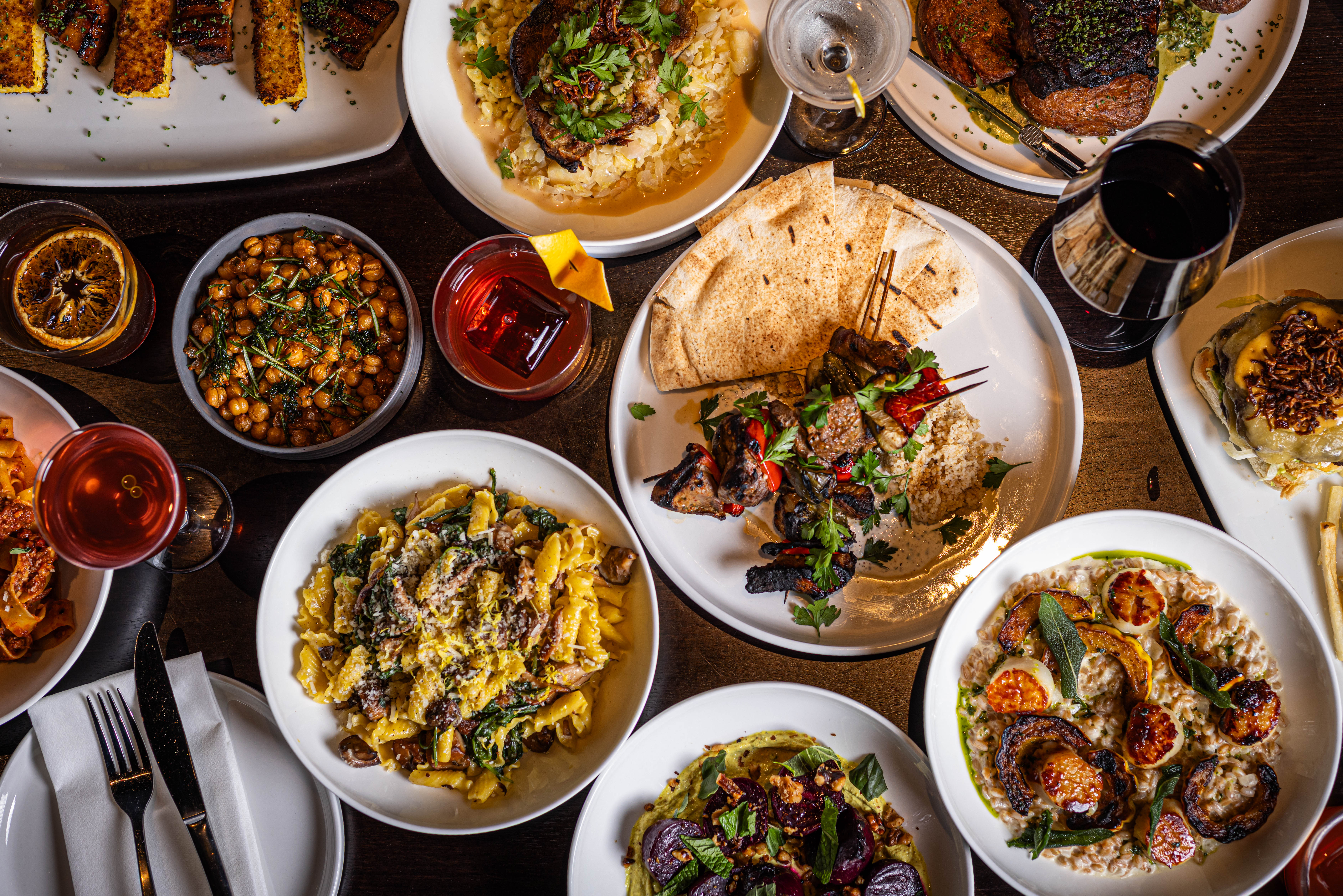Ask Chef: Jeremy Umansky of Larder's Tips for a Great Lakes Fish Fry
Lake Erie has plenty to offer come fish fry season. Larder’s Jeremy Umansky shares a few of his favorite local catches.
by Jeremy Umansky | Feb. 22, 2023 | 2:00 PM

David Wilson
“I’d like to cook more of it at home but so much from the buying to the actual cooking is intimidating. I was hoping to get good at frying fish for when I get back to fishing in the spring. With fish fry season upon us, do you have any tips that won’t lead me to burning down my kitchen?” –John from Cleveland
Fried fish, you say? Why, you know the way to my gustatory heart!
The frying of fish can be traced back to the roots of our hominid family tree; it’s an ancient method found the world round. Often associated with the Lenten traditions of several denominations of Christianity, fish fries have morphed into a good ol’ American tradition.
Fish fries differ depending on where you are in America. Cornmeal-crusted catfish along the southern Mississippi river, cracker meal-dredged grouper in south Florida, battered cod in New England and pan-fried trout in the Rockies are all wonderful. But Great Lakes fish fries are where it’s really at.
What makes a Great Lakes fish fry? It all starts with the catch. As delicious as cod is, we have some delightful fish in our backyard. Here are a few of my local favorites, all of which can be sourced at Kate’s Fish at the West Side Market. Let trusted fishmongers like owner Tom McIntyre and his team guide your purchase. He can also clean and prep your fish, so you can avoid sending scales flying across your kitchen.
Lake Smelt: These tiny fish, about the size of my ring finger, come cleaned (no heads), gutted and frozen in 1-pound bags. They’re not deboned, but like sardines and other tiny fish, their bones soften so much with cooking that you just eat them. There’s no prep involved aside from defrosting the fish. They are fun to serve with sauces and dips; think French fries.
Buffalo Fish or Carp: These are massive vegetarian fish that have delicious and succulent meat. Buffalo looks like carp and inhabits many of the same areas in our lake. I feel it tastes slightly richer than most species of carp in Lake Erie. Both have a firm, meaty texture. Get a filet and cut it into “strips” or “nuggets” before breading and frying. I might add that the scales of these fish are rather large and fry up wonderfully. Add a dash of seasoning like the locally made Chutni Punch, and they rival a potato chip in terms of craveability.
Perch: These small fish have the sweetest tasting flesh of nearly any fish in Lake Erie. The filets are small and easy to work with and will please even the pickiest of seafood eaters.
Walleye: The undisputed king of lake fish when it comes to fish fries, its meat is mild tasting, succulent, unctuous and filling. Fried Lake Erie walleye should hold a special place in the hearts of anyone who makes their home on its shores. It can be enjoyed fresh year-round, supports a robust fishery and is just simply delicious.
Other fish out of our great lake that fry up beautifully include numerous species of catfish, trout, bass, crappie, bluegill, sunfish, sheepshead, muskie and whitefish. Hell, you could even tack on some frog’s legs and snails if that’s your cup of tea (it is mine and this is what I do at my restaurant).
Once you’ve talked to your fishmonger and picked out some fish you’ll need a few other things. As I mentioned in the last column you won’t really find recipes here, just method, technique, and ratios. By learning how to cook this way you can combine not just flavors, tastes, and textures to your liking but you can mix and mash techniques to create something truly special to enjoy.
Besides fish, you’ll need the following ingredients:
- Flour;
- Corn Starch;
- Spices (get creative);
- Buttermilk (optional);
- Amazake or miso (optional);
- Salt; and
- Cooking Oil (a gallon should do if cooking for eight or less).
Why haven’t I given you amounts of these items? Because aside from the optional ingredients, these are staple items that you should always have a fair amount of in your kitchen. If you don’t have these, get them in the largest container that you can accommodate in your kitchen.
As far as equipment goes, you’ll need the following:
- A cast iron dutch oven or other sturdy, high-sided pot;
- A strainer, slotted spoon, or fish spatula for removing the fish from the hot oil. Don’t use tongs as you run the risk of crushing your delicate fried fish;
- A thermometer that can tell you the temperature of your oil and the internal temperature of your fish;
- A bowl or two of various sizes for holding the marinade and marinating fish;
- A large plate or baking tray to hold flour for breading;
- A resting rack to place the hot fish on so that any residual oil will drip away; and
- Paper towels.
Before you deep fry something at home, you must commit to the following safety rules and guidelines:
- Frying can cause personal harm and or fires if not attended to properly. Never walk away from frying food;
- Water and oil are enemies, never use water to put out a grease fire! Use a fire extinguisher or try to smother the flames with salt;
- Never fill your pot over half full with oil. If you follow this rule, then you will never have any problems when the fish starts to bubble and fry as long as you don’t overcrowd your pot;
- Don’t overcrowd your pot! It might take you a while to fry up some fish depending on how much you’re cooking. Set your oven to the “warm” setting and hold your already fried fish in there until the whole batch is ready. Crowding your pan leads to uneven cooking, too, which in fried foods equals greasy and oil-soaked food instead of golden brown and crispy; and
- As nice as a whole filet of fried fish looks, it's only practical depending on the size of your fish. Perch and smelt will fry up a great whole but good luck fitting a whole walleye filet in a pot. It’ll be too big. Think about it this way, if you cut your fish into smaller or bite sized pieces before you fry then nobody will have to mess with a knife and fork later.
Simply put, frying food at home takes up a bunch of counter space. When you fry, you will need various stations set up. One station should be your breading station. You can work on breading your fish while your oil heats up to 350 degrees Farenheit in a pot on your stovetop. Once breaded, bring the fish heads to your frying station where you’ll cook in batches. After frying you’ll need a station or space to safely rest the fried fish for a few moments to get rid of excess oil and to cool slightly before serving to people.
Fish can simply be dredged in flour and then fried but I prefer to build some flavor and texture into my breading and the fish. I do this by marinating the fish. I like to use equal parts butter, milk and the Japanese koji-based ingredient called amazake for its ability to create umami flavors when cooking. If you don’t have access to amazake, whisk 1 tablespoon of miso into a pint of buttermilk to achieve a similar effect. Toss this on the fish to coat evenly and then let the fish rest cold for at least 20 minutes before frying. Use water or straight amazake if there’s a dairy issue. A pint of this liquid should be enough for a whole walleye or 1 pound of smelt.
Most Great Lakes Fish Frys are either dredged in seasoned flour or breadcrumbs. I prefer a flour dredge. I make it by combining equal parts of wheat flour and cornstarch with a good amount of whatever spices I want. For a whole walleye or pound of smelt you would use roughly a cup of each flour and cornstarch and 1 to 2 tablespoons of spices, depending on how flavorful you like it. Corn starch is the restaurant chef’s secret ingredient to creating fried foods that are crispy, crunchy and don’t get too dark in color if they’re slightly overcooked. After the fish have marinated, toss the pieces — just a few at a time so that they don’t stick together — in the flour dredge. Time this with your oil heating up so the dredge doesn’t become sticky and tacky from sitting on the fish too long.
Now it's time to fry your fish. Use your slotted spoon to slowly lower your breaded fish into the hot oil. Maintain 350 degrees F oil by checking with your thermometer and adjusting the heat as necessary. The temperature of your oil will drop by 50 degrees F or more once you add fish to it. Adjust the heat to gently increase keeping in mind that different cooktops heat differently. You may need to attentively monitor the temperature of the oil so that you don’t heat it back up too much. Once you have your fish frying away, evenly brown it by flipping it from time to time. As it starts to brown, check the internal temperature of the fish by pulling a piece out of and away from the oil and sticking your thermometer in the thickest part of the fish. Depending on the fish and your preferred doneness you are looking for temperatures between 120 degrees F and 140 degrees F. Over 140 degrees F you run the risk of having very, very dry fish, so consider yourself warned.
This is when I adjust the seasoning with salt as needed before serving. Keep in mind that if you like several different types of fish you can cook them all at one meal. It is a fish fry after all so make it about the fish!
About the Author
Jeremy Umansky is the James Beard-recognized co-author of Koji Alchemy and chef and co-owner of Larder Delicatessen and Bakery. Don’t miss his seasonal musings on cooking in his new column for Cleveland Magazine.
Chef Wants to Hear from You!
Tag a photo of your fried fish with #AskChefCLE or send a photo to conversation@clevelandmagazine.com, where you can also send me your burning questions from the kitchen.
Bite into the Cleveland dining scene by signing up for our free weekly CLE Food & Drink newsletter — your guide to food and drink throughout The Land. Arriving in your inbox every week, this coverage fills you in on everything from mocktails to shareable plates — and more. Click here to subscribe.
Trending
-
1
-
2
-
3
-
4
-
5










